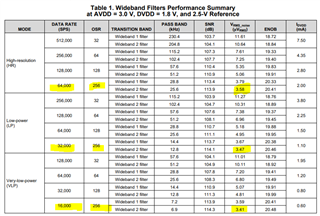Issue:
With the HR pin tied low, when converting the EXT terminal external resistance from 120K to 60.4K, that is, when switching VLP mode to LP mode, it does get higher in power consumption, but the output noise of the ADC is not improved.
But at this point the AFE front end equivalent self-noise and the theoretical output noise of the ADC are essentially equal, so the overall equivalent self-noise output should be somewhat reduced after switching mode.
The customer would like to know what's the possible reason for that. Thanks!
Best Regards,
Cherry Zhou


